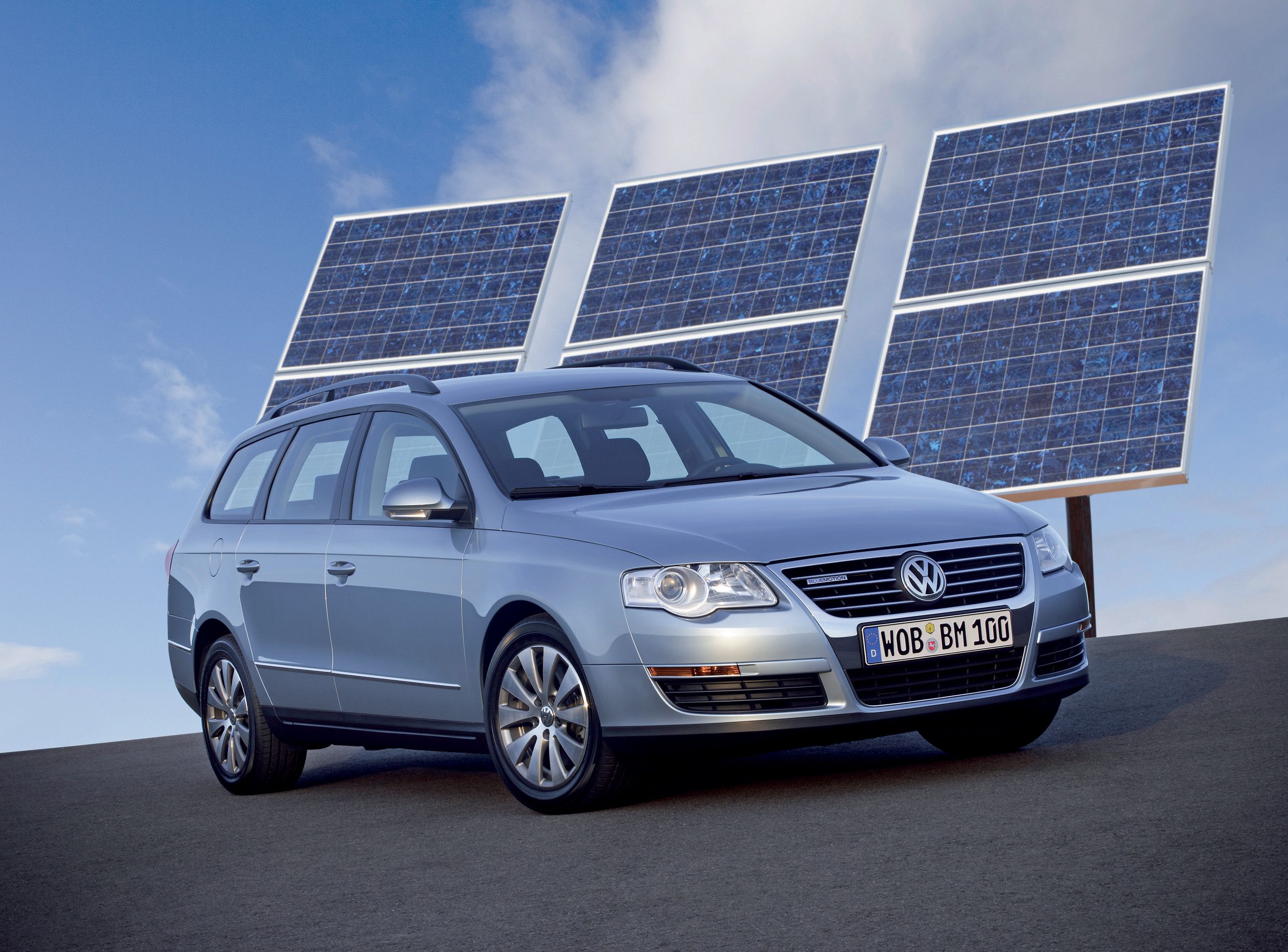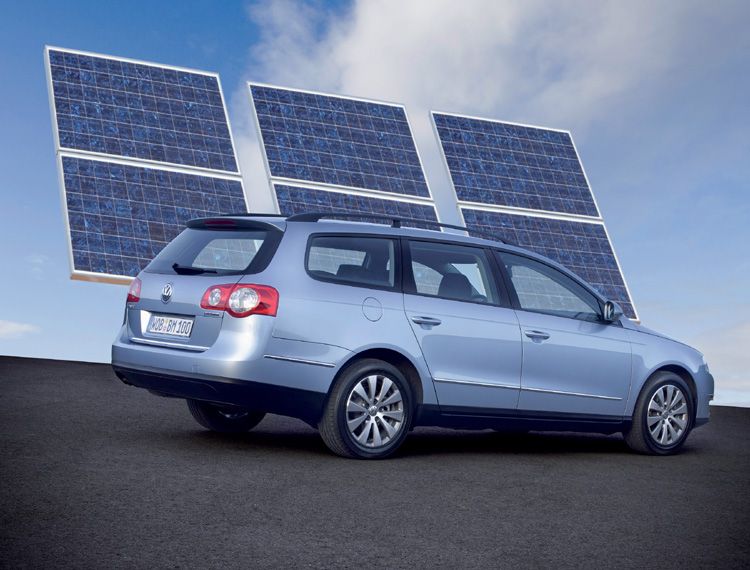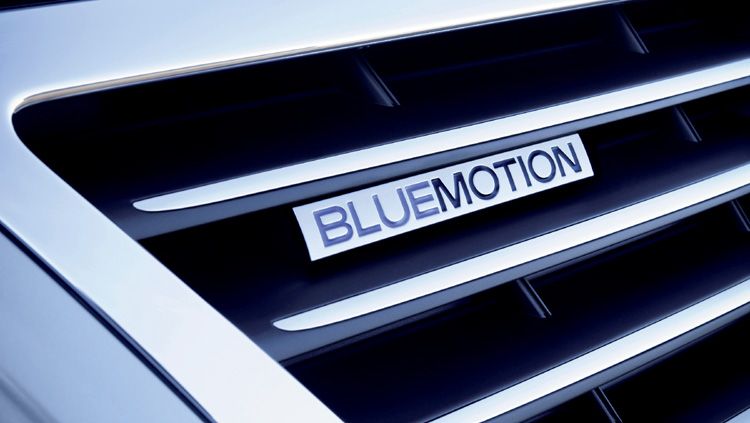2007 VW Passat BlueMotion
- Make: Array
- Model: 2007 VW Passat BlueMotion
- [do not use] Vehicle Model: Array
Economy: Passat BlueMotion is satisfied with 5.1 liters diesel per 100 kilometers
Low emissions: 136 g/km CO2 sets a top value among the mid-class cars
Wolfsburg, 06 March 2007 - World premiere for one of the most economical mid-class cars of our time: The Passat BlueMotion. Volkswagen is presenting this new model at the 77th Geneva Motor Show. The Passat BlueMotion, powered by a TDI engine rated at 77 kW / 105 PS, breaks through the magical fuel consumption barrier of 5.5 liters for its class, as sedan and Variant. The sedan consumes just 5.1 liters diesel per 100 kilometers, and the Variant just 5.2 liters. And that represents an improvement of 0.7 liters for the Variant and 0.6 liters for the sedan. The Passat BlueMotion will be introduced in Europe early this summer.
Clean: CO2 emissions significantly reduced
Paired with its low fuel consumption values are CO2 emission reductions of 15 g/km for the sedan and 19 g/km for the Variant. Total emissions of 136 g/km and 137 g/km (Variant) are a testimony to the innovative potential of the Volkswagen TDI engines. In addition, a particulate filter is integrated in the emissions control system as standard equipment.
Fast: Additional five km/h top speed as side effect
Fuel economy and CO2 data are all the more impressive, because the Passat, at a length of 4.77 meters, is among the largest vehicles in its segment. An interesting side benefit: Its aerodynamic refinements and longer gearing have increased its top speed by five km/h. The sedan tops out at 193 km/h, and the Variant reaches 190 km/h.
Economical: Passat BlueMotion reduces costs
The Passat BlueMotion not only protects the environment and energy resources; it also protects the car owner’s budget. At an average annual driving distance of 15,000 kilometers, fuel costs are just 68 Euros* per month due to the car’s excellent fuel economy. A pleasant side benefit: sedan and Variant have theoretical ranges of about 1,350 on a single tank of fuel! And that translates to just eleven fill ups per year at 15,000 kilometers.
Aerodynamic: Body fine tuning reduces air resistance
The excellent fuel economy and emission values were achieved by continuous fine tuning of the drivetrain, chassis and car body. An example in the area of aerodynamics: The radiator grille trim was modified, and the underbody was skirted. Modifications have improved air resistance values (cW x A) by 12.2 percent for the sedan (12.5 percent for Variant) to 0.617 and 0.629 (Variant).
Lowered: Lower chassis also optimizes air resistance
A number of effective changes were also made to the chassis. A careful look at the car reveals that the Passat BlueMotion "stands" somewhat lower in the wheel housings than the base version; this was done for better aerodynamics, and indeed it has been lowered 15 millimeters in front and eight millimeters in the rear. The lowest possible rolling resistance is guaranteed by high-tech tires ("best-in-class energy tires") sized 205/55 R16 91H with tire pressure increased by 0.4 bar in part-load operation.
Innovative: Engine helps driver in gear selection
The 1.9 TDI of the Passat BlueMotion (77 kW / 105 PS at 4,000 rpm) develops a maximum torque of 250 Newton-meter (starting at 1,900 rpm). Its notable fuel efficiency was achieved by tuning a wide variety of parameters on the four-cylinder, direct injection turbo-diesel engine. A software modification to the engine controller allowed development engineers to reduce idling speed, for example. The TDI’s engine controller also outputs a "gear recommendation" to the "Multifunctional Display Plus". There the driver can read off which of a total of five forward gears is the ideal gear at any given time.
Program: BlueMotion is more than a vehicle name
In the summer of 2006 Volkswagen presented its first model under the new BlueMotion label: The Polo BlueMotion. Power: 59 kW / 80 PS. Fuel consumption: 3.9 liters diesel per 100 kilometers. CO2 emissions: 102 g/km. But the name BlueMotion not only refers to the automobile, rather it applies to the entire brand. "Blue", the Volkswagen color, stands for the elements to be protected: Water and air. "Motion" embodies the aspect of forward-looking mobility directed toward the future. BlueMotion is advancing to become a quality seal that stands for economy without compromises in driving fun.






